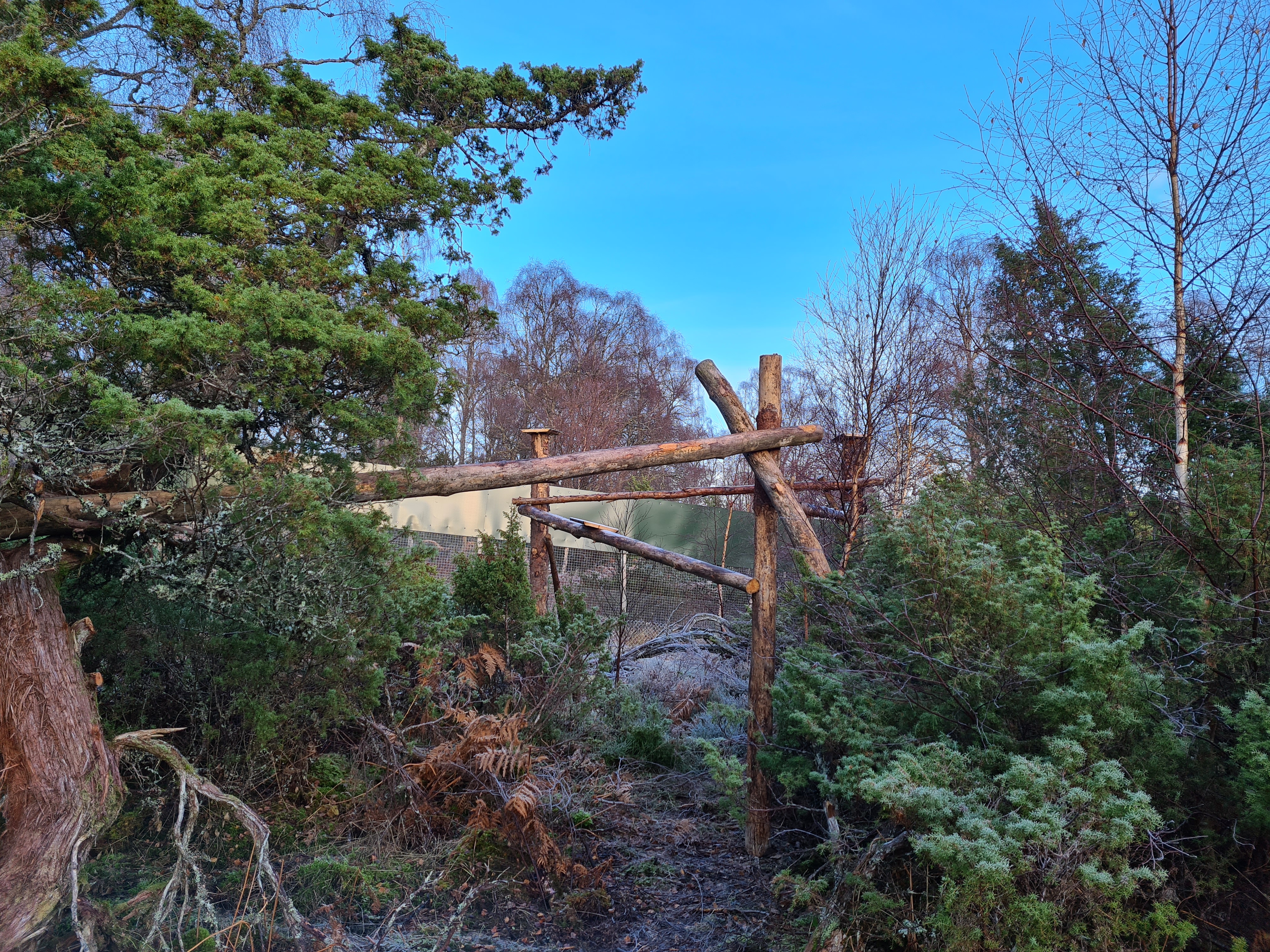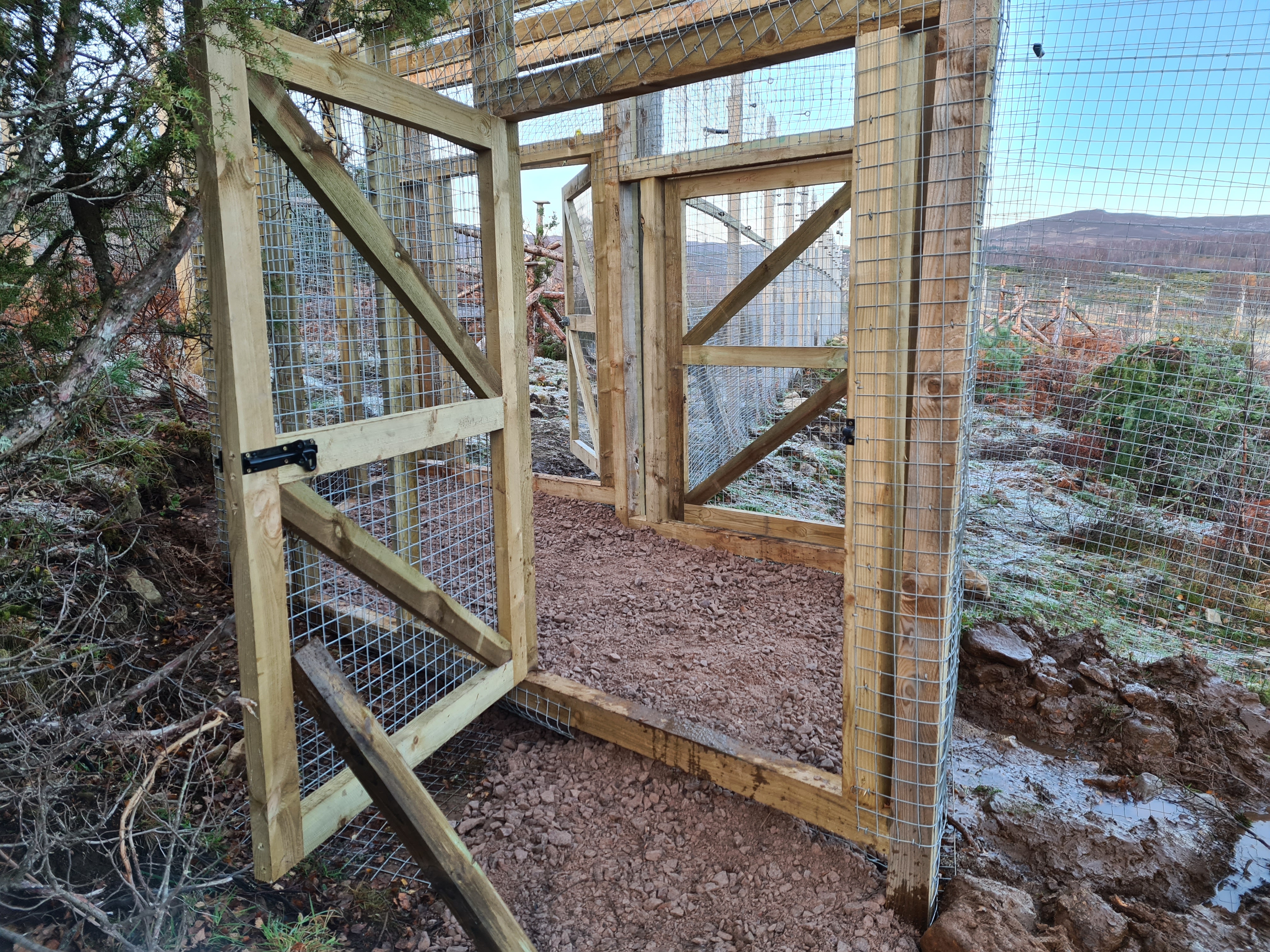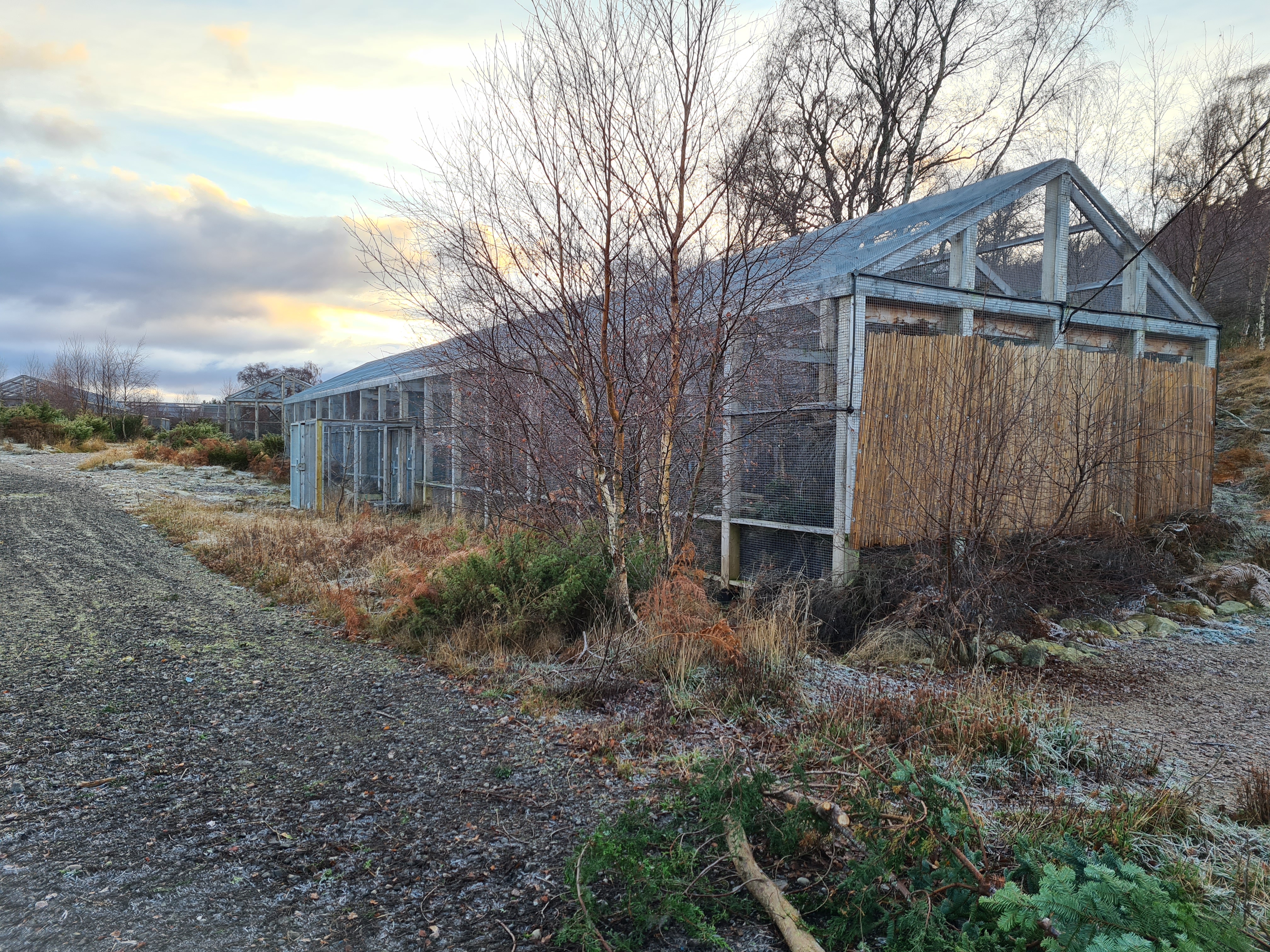Volunteering with Saving Wildcats
It … is … cold! Minus four to be exact, as I arrive at the Saving Wildcats office in the Royal Zoological Society of Scotland’s Highland Wildlife Park, Kincraig. I’m prepared though - I have two pairs of trousers and four tops on.
Pulling into the yard, I’m greeted by the keepers and meet the two other volunteers whom I’ll be working with – Vince and Stephen. They have both volunteered with the Saving Wildcats team before, and like me, have signed up to give their time through the Cairngorms National Park volunteering programme. So far, they’ve helped clear scrub and build climbing frames for the cats. Everyone is friendly, welcoming, and enthusiastic – I know straight away that I’m in good company. Paperwork gets signed and we all bail into a little hatchback and are driven up to the pre-release enclosures.
Managed by lead partner RZSS, the Saving Wildcats project has been a great success so far, with over 20 kittens born in 2022. The kittens grow up with mum and dad in the breeding enclosures. One of the keepers tells us that the males stay with mum and kittens for a while so that the kittens have a chance of learning to socialise with him. When they are 6-8 months old, the kittens are moved into the pre-release enclosures. As the name suggests, these are the enclosures where the kittens will prepare for life in the wild. Research has shown that 6-8 months is the age at which the kittens would naturally start to disperse, and the keepers need to remove them before the next breeding season starts.
There are 20 enclosures in total, so on average there can be one kitten to an enclosure. The cats are predominately solitary in the wild, but females may be housed together if necessary. Once the kittens are introduced into the pre-release enclosures, the keepers will keep interactions to a minimum. Meals will be delivered covertly, to stop the cats from associating people with food. It’s an important step in their journey towards their challenging life in the wild. Each enclosure has CCTV for security and for monitoring the cats. A lot of research into the cats’ behaviour in the wild is being done via camera traps, as wildcats are very elusive. Keepers and researchers around the UK are using this footage to build an accurate picture of the natural history of the species, which will be used to further enhance their conservation.
Our first job of the morning was to finish some fencing. The end of the wire fencing extends onto the ground of the enclosure. To stop the cats from trying to climb underneath it, we need to add rocks at the bottom of the fencing on top of the high-tension wiring. It’s laborious but important work. If you’ve ever worked with animals, you know the one thing you don’t want them to do, is the one thing they will do. These are also precious animals, each one is essential to the future of the species, so we need to ensure they are safe.
It was a great opportunity to explore the pre-release enclosures. Each enclosure has multiple nest boxes, a large climbing frame, and plenty of native flora for the cats to hide in and explore. Fun fact: when they make the climbing frame for the cats, they don’t want every part of it to be perfectly sturdy. Having the odd wobbly bit makes it more interesting for the animals and helps them develop their balance and strength.

Once the fence was completely lined, we then helped shift some logs that were going to be used to build another climbing frame. That job was easy enough though, we just chucked them into the back of a pickup and unloaded them at the other end. We were then driven back to the main carpark and visitor area where we treated ourselves to a warm lunch in Highland Wildlife Park’s Antler Café.
After lunch, it was time to roll our sleeves up again and shift some hardcore, material made up of stones, concrete and brick. Each of the enclosures has an airlock entrance and each entrance needed to be lined. The ground around gateways and doorways gets very worn, and the wet weather up in the Highlands meant that each airlock was essentially a muddy slip’n’slide. Not anymore though - we shovelled and wheelbarrowed that hardcore like champions! And what a difference it made to the enclosures.

We finished at around 3pm. It was still bright out and the views of the Highlands were absolutely stunning. As we made our way out of the pre-release enclosures, we were lucky enough to pass some of the wildcats in the breeding centre. They are in very well-protected enclosures that are being isolated for biosecurity reasons. As the cats are going to be released into the wild, it is essential that they are protected from disease, particularly diseases that affect domestic cats. Only four keepers and the vet are authorised to enter the wildcat enclosures, and there are strict hygiene measures in place for when they do. We were able to see the wildcats from a short distance away though and even saw a couple of the kittens! The keepers know their animals incredibly well and were able to identify exactly which cats we were looking at. There are wildcats that regular visitors can see in the main park (you’ll find them in the Woodland Walk) and each individual is important – but there’s something really special about seeing the kittens in the breeding centre, knowing that they are the future of their species.

We were brought back to the yard – three weary and muddy volunteers. My multiple layers had long been cast off and stuffed into my backpack. Now you might be thinking, “why on Earth would you volunteer to spend a day hauling rocks?”. Let me answer that with an anecdote. In 1962, President Kennedy was touring NASA. On the tour, he ran into a janitor and asked him what he was doing. The janitor said, “I’m helping put a man on the moon”. So, why did I spend a day lugging rocks and heaving hardcore? Because I’m helping to save Scotland’s wildcats.
Find out more about the Cairngorms National Park volunteering programme here.
